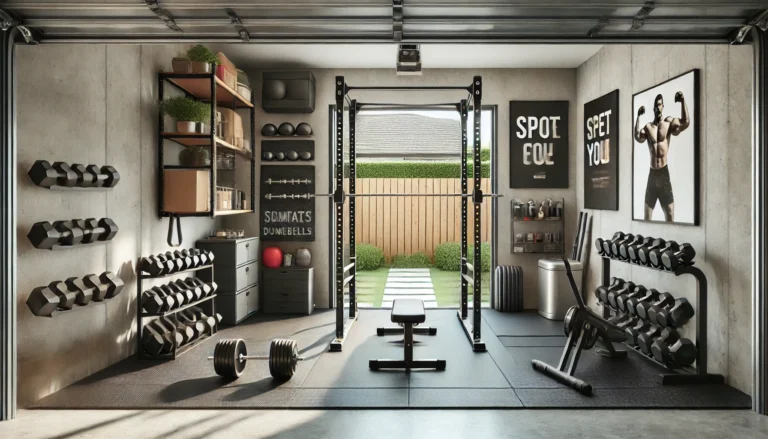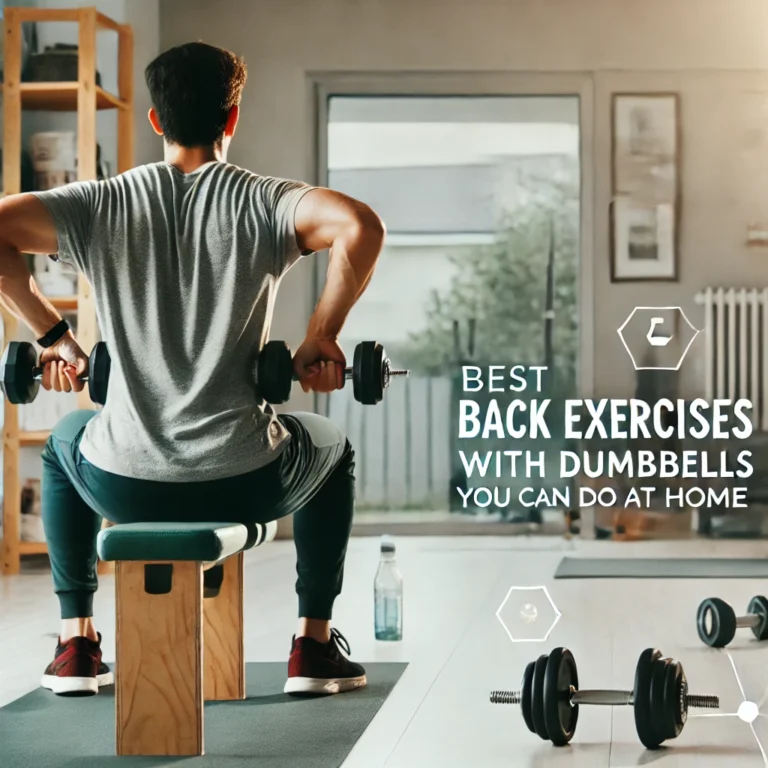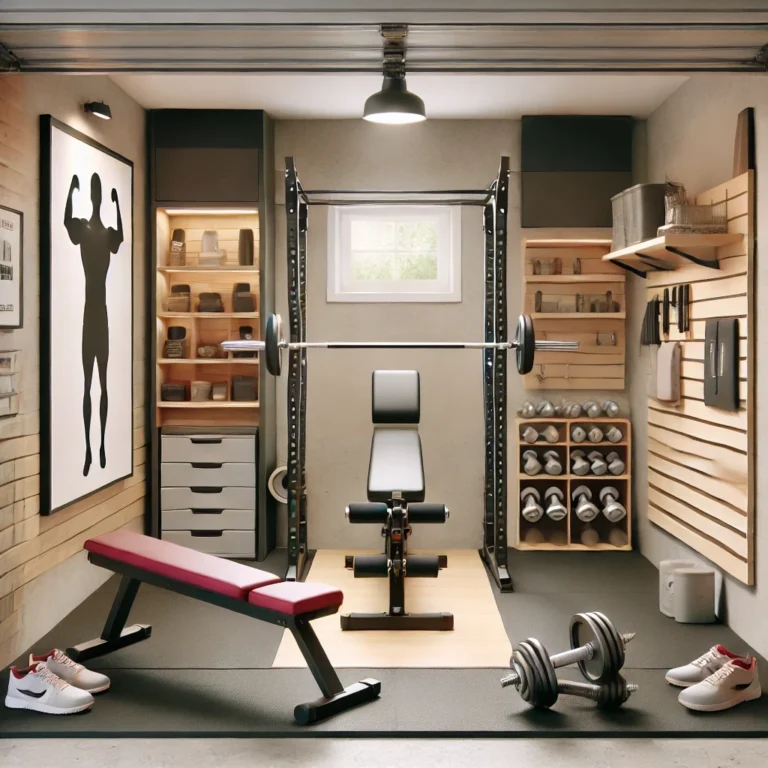The Stairmaster has become one of the most popular cardio machines for fitness enthusiasts, known for its ability to mimic the natural movement of climbing stairs. As more people build home gyms, the Stairmaster has gained popularity due to its versatility and effectiveness in helping users achieve various fitness goals, from weight loss to improved endurance. Whether you’re looking to burn calories, strengthen your lower body, or improve your cardiovascular fitness, the Stairmaster offers a low-impact solution that fits seamlessly into any workout routine.
For those considering building or upgrading their home gym, the Stairmaster is a great option to include alongside other essential equipment. In this post, we’ll explore the benefits of using a Stairmaster, how to use it correctly, and why it’s a must-have addition to your home gym setup. If you’re looking for more information on building a comprehensive home gym, check out our Ultimate Guide to Home Gym Equipment.
What is a Stairmaster?
A Stairmaster is a cardio machine designed to simulate the action of climbing stairs, providing an effective workout that targets both cardiovascular endurance and lower body strength. The machine features either rotating stairs which you can increase the speed off to increase the difficulty, smaller versions can have two pedals that move up and down, mimicking the natural motion of walking or running up stairs. Users can adjust the resistance level to increase or decrease the intensity, making it suitable for various fitness levels. Modern Stairmaster models often come equipped with digital displays that track metrics like calories burned, heart rate, distance, and time, helping users monitor their progress and set fitness goals.

Stair-climbing machines have evolved significantly over the years, with early versions being more mechanical and less customizable. The Stairmaster stands out from earlier machines by offering smoother movements, more advanced technology, and a range of resistance settings that allow for a more personalized workout. Its ergonomic design also ensures users maintain proper posture, reducing the risk of injury. The Stairmaster’s durability and compact size make it a popular choice for home gyms, offering a versatile cardio solution without taking up too much space.
What are the benefits of using a Stairmaster
Using a Stairmaster offers numerous benefits, making it a highly effective cardio machine for anyone looking to improve their fitness levels. One of its key advantages is the way it enhances cardiovascular fitness and boosts endurance. By simulating the action of climbing stairs, the Stairmaster challenges your heart and lungs, leading to improved heart health and stamina over time. Regular use can increase your aerobic capacity, allowing you to perform daily activities with less effort.
Cardio and Endurance
Using a Stairmaster is a fantastic way to improve cardiovascular fitness and boost endurance. The machine mimics stair climbing, which challenges your heart and lungs, leading to enhanced heart health and increased stamina. Over time, consistent use will improve your aerobic capacity, allowing you to handle daily tasks and physical activities with more ease and less fatigue.
Strengthens Lower Body Muscles
The Stairmaster is excellent for targeting and strengthening your lower body muscles. The stepping motion directly engages major muscle groups such as the glutes, hamstrings, calves, and quadriceps. This makes it a great option for building strength and toning the legs, which benefits both athletic performance and functional mobility.
Weight Loss
For those looking to shed extra pounds, the Stairmaster is an efficient calorie-burning machine. It engages large muscle groups and elevates the heart rate, which burns a significant amount of calories in a short period. Incorporating the Stairmaster into a consistent workout routine, along with a balanced diet, can contribute to effective fat loss and help you reach your weight loss goals.
Low Impact on Joints
One of the major advantages of the Stairmaster is that it offers a low-impact workout, which is much gentler on the joints compared to running. The smooth, controlled stepping motion puts less strain on the knees, hips, and ankles, making it ideal for people with joint concerns or anyone seeking a safer, lower-impact cardio option.
Improves Balance and Coordination
Using a Stairmaster can also enhance balance and coordination. The controlled stepping action requires stabilizing muscles to be engaged, which improves balance over time. This is especially beneficial for older adults or individuals recovering from injury who want to enhance their stability and coordination.
Convenient for Home Use
The Stairmaster is designed with home gyms in mind. Many models are compact and easy to store, with some even offering foldable versions, making them suitable for small spaces. Its convenience and space-saving design make it a versatile and effective addition to any home gym, allowing users to enjoy a high-quality cardio workout without sacrificing too much room.
How to Use a Stairmaster Correctly
To get the most out of your Stairmaster workouts and avoid injury, it’s essential to know how to set up and use the machine correctly. Here’s a simple guide to help you get started.

Basic Setup
When you first approach the Stairmaster, start by powering up the machine and selecting a workout program or manual mode, depending on your preference. Adjust the resistance level to match your fitness level—beginners should start with lower resistance and gradually increase it over time as endurance builds. Once you’re ready, step onto the pedals carefully, gripping the handrails for support. To start the machine, most models require you to press a start button and begin stepping at a comfortable pace. If you need to stop, use the pause or stop button for a controlled exit.
Correct Form
Maintaining proper form is crucial to getting the most out of your Stairmaster workout. Stand tall with your chest up and shoulders back, avoiding the temptation to slouch. Your hands should rest lightly on the handrails for balance, but you should not lean on them, as this reduces the effectiveness of the workout. Ensure that your feet are placed flat on the pedals, and push through the entire foot—especially the heels—to fully engage your glutes and hamstrings. Avoid tiptoeing, as this can lead to strain in your calves and Achilles tendons. Keep your movements smooth and controlled, stepping at a steady pace rather than rushing or skipping steps.
On other types of Stairmaster step up onto it using the hand rails as support, select a workout plan or press start. Keep your back straight, using the handrails as support step up onto each step as they rotate round increasing or decrease the speed to your ability and comfort.
Common Mistakes to Avoid
Many users make the mistake of leaning too heavily on the handrails. While they are there for balance, leaning reduces the intensity of the workout and shifts the focus away from your lower body muscles. Another common error is skipping steps by hopping from one pedal to the next. This not only decreases the effectiveness of the exercise but also increases the risk of injury due to unstable footing. Finally, avoid setting the resistance too high right from the start; this can lead to poor form and fatigue. Avoid setting the speed to high for yourself as you could potentially fall and injure yourself. Always aim for a resistance level that allows you to maintain good posture throughout the workout.
Stairmaster Workouts for Different Goals
The Stairmaster offers a wide range of workout options to suit different fitness levels and goals. Whether you’re just starting out or you’re looking for a high-intensity challenge, there’s a workout for everyone. Here’s a breakdown of some effective routines for beginners, intermediate users, and those looking for advanced, fat-burning workouts.
Beginner Workouts
If you’re new to the Stairmaster, it’s important to start slow and focus on building your stamina and getting comfortable with the machine. A good beginner workout would involve using a low resistance level and stepping at a steady pace. Aim for 10–15 minutes of continuous stepping, with the goal of maintaining a moderate pace without feeling too winded. You can break this into intervals of 2–3 minutes of stepping, followed by a 1-minute rest. As you become more comfortable, gradually increase the duration to 20–30 minutes.
Intermediate Workouts
For those who have built up some endurance and are ready to increase the intensity, intermediate workouts can help you push your stamina further. Set the resistance to a moderate level, and aim for 20–30 minutes of continuous stepping. Incorporate intervals where you increase your speed or resistance for 1–2 minutes, followed by 2–3 minutes of recovery at a slower pace or lower resistance. This type of workout will challenge your cardiovascular system and improve your endurance, helping you become more efficient at burning calories while building strength in your lower body.
High-Intensity Workouts
High-intensity Stairmaster workouts are perfect for advanced users looking to burn fat, build strength, and increase their endurance. Set the resistance to a higher level and incorporate intervals of high-speed stepping, followed by short recovery periods. For example, you can sprint for 30 seconds at high intensity, then recover for 1 minute at a slower pace. Repeat this cycle for 20–25 minutes to maximize fat burning. You can also increase the resistance to simulate steep stair climbing, which will challenge your muscles even more, especially your glutes, hamstrings, and quads.
How the Stairmaster Fits Into a Home Gym
The Stairmaster is a fantastic addition to any home gym, thanks to its versatility, effectiveness, and relatively compact design. Whether you’re building a home gym from scratch or upgrading your current setup, the Stairmaster offers a powerful cardio workout without taking up too much space. Many models even come in space-saving versions, including foldable designs, making it an ideal choice for those with limited room. It fits well alongside other essential equipment like dumbbells, resistance bands, or a bench, offering a full-body workout solution in a small area.
For those looking to create a well-rounded home gym, incorporating a Stairmaster can complement other cardio equipment such as treadmills or elliptical machines. You can alternate between different types of cardio workouts to keep your routines fresh and challenging, ensuring you work on various aspects of your fitness. Check out our Ultimate Guide to Home Gym Equipment for a comprehensive look at building your home setup.
Additionally, if you’re interested in exploring other cardio machines, be sure to read our post on The Best Cardio Machines for Your Home Gym. It covers more options for effective home cardio workouts. You can also dive deeper into overall cardio training techniques by checking out our Ultimate Guide to Cardio Training, which provides more insights into maximizing your cardio sessions for better fitness results.
By adding a Stairmaster to your home gym, you’ll have a high-quality cardio option that delivers excellent results, whether your goal is to improve endurance, burn fat, or strengthen your lower body—all without sacrificing space.
Stairmaster vs Other Cardio Machines
When it comes to cardio equipment, the Stairmaster stands out for its unique approach to cardiovascular fitness and lower body strengthening. However, it’s important to compare it with other popular cardio machines, such as treadmills, elliptical machines, and rowing machines, to understand which is best suited for your specific fitness goals.
Stairmaster vs Treadmill
Both the Stairmaster and treadmill are excellent for improving cardiovascular endurance, but they differ in how they target your muscles. The Stairmaster emphasizes lower body muscles, particularly the glutes, hamstrings, calves, and quads, due to the stepping motion. This makes it ideal for those looking to strengthen and tone their lower body while burning calories.
On the other hand, a treadmill allows for a range of workouts, from walking to high-intensity running, offering a more varied workout experience. If your goal is to simulate outdoor running or train for events like marathons, a treadmill might be the better choice. For those focused on lower-impact exercise with targeted muscle engagement, the Stairmaster is more suitable.
Stairmaster vs cross trainer
The cross trainer provides a low-impact, full-body workout by engaging both the upper and lower body. The moving handles allow you to work your arms, while the cross trainer motion targets the legs, providing a more balanced workout. cross trainer are particularly good for people looking to improve overall endurance with minimal joint impact, as the smooth, gliding motion is gentle on the knees and hips.
The Stairmaster, however, is more focused on lower body strength and muscle tone, making it a better option for those who want to emphasize lower body conditioning. If your goal is primarily to build endurance while also working your arms, an elliptical might be preferable, while the Stairmaster is ideal for those seeking a focused lower body workout.
Stairmaster vs Rowing Machine
The rowing machine is another full-body cardio machine that works both the upper and lower body. It’s highly effective for building muscle and endurance simultaneously, as rowing engages the legs, core, back, and arms in one fluid motion. Rowing is an excellent option for those looking to strengthen their entire body while also improving cardiovascular fitness.
In contrast, the Stairmaster focuses mainly on the lower body and cardiovascular endurance. While it is highly effective for toning legs and improving heart health, it doesn’t offer the same upper-body engagement that rowing provides. For those looking for a full-body workout that includes strength training, rowing might be the better option, whereas the Stairmaster is ideal for those who want to focus on lower body endurance and fat loss.
Which Machine Is Best for Your Goals?
- Weight Loss: Both the Stairmaster and treadmill are excellent for calorie burning, but the Stairmaster may offer a slight edge in muscle toning while still helping with fat loss. The rowing machine also burns a high number of calories while engaging the whole body.
- Endurance: The treadmill is ideal for building running endurance, while the Stairmaster helps boost stamina with a focus on lower body endurance. The elliptical offers a more balanced, full-body endurance workout.
- Building Muscle: If you want to build lower body strength while also getting a great cardio workout, the Stairmaster is the better choice. For full-body muscle engagement, a rowing machine may be more suitable.
Conclusion
Owning a Stairmaster offers numerous benefits, making it a valuable addition to any home gym. From improving cardiovascular fitness and building lower body strength to promoting weight loss and being gentle on your joints, the Stairmaster delivers a highly effective workout for users of all fitness levels. Its compact design and availability in space-saving models make it ideal for home use, even in smaller spaces. Whether you’re looking to increase endurance, burn calories, or tone your legs, the Stairmaster provides a versatile and efficient solution.
If you’re building or upgrading your home gym, consider adding a Stairmaster for a well-rounded cardio experience that targets both your heart and muscles. For more ideas on creating the perfect home gym setup, be sure to check out our Ultimate Guide to Home Gym Equipment, where you can find everything you need to make informed decisions on the best equipment for your fitness goals.
If your also looking to get into strength training in your home gym check out our guide to home gym dumbbell and barbell exercises





